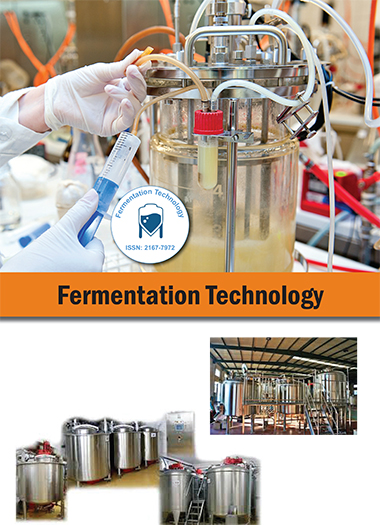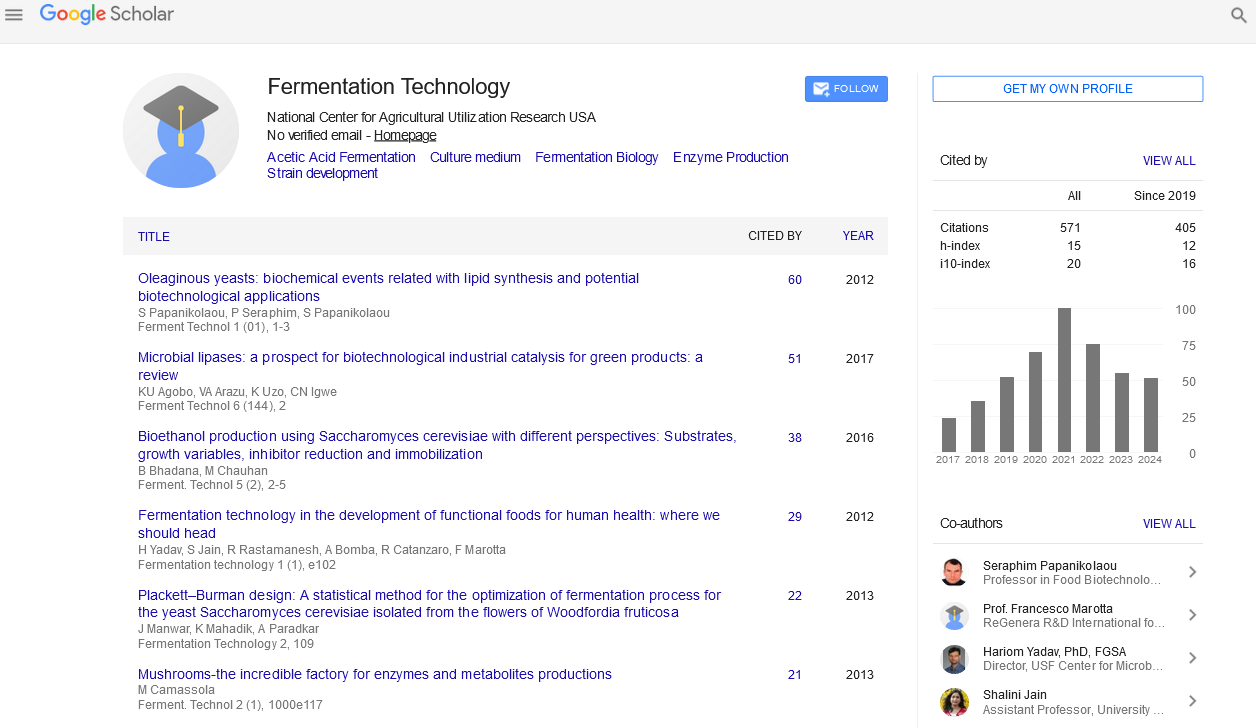Indexed In
- Open J Gate
- Genamics JournalSeek
- Access to Global Online Research in Agriculture (AGORA)
- RefSeek
- Hamdard University
- EBSCO A-Z
- OCLC- WorldCat
- Publons
Useful Links
Share This Page
Journal Flyer

Open Access Journals
- Agri and Aquaculture
- Biochemistry
- Bioinformatics & Systems Biology
- Business & Management
- Chemistry
- Clinical Sciences
- Engineering
- Food & Nutrition
- General Science
- Genetics & Molecular Biology
- Immunology & Microbiology
- Medical Sciences
- Neuroscience & Psychology
- Nursing & Health Care
- Pharmaceutical Sciences
Perspective - (2024) Volume 13, Issue 1
Biotechnological Prospects of Methane Oxidation: Genomic Perspectives and Applications
Sophie Ava*Received: 26-Feb-2024, Manuscript No. FMT-24-25552; Editor assigned: 28-Feb-2024, Pre QC No. FMT-24-25552 (PQ); Reviewed: 13-Mar-2024, QC No. FMT-24-25552; Revised: 20-Mar-2024, Manuscript No. FMT-24-25552 (R); Published: 27-Mar-2024, DOI: 10.4172/2167-7972.24.13.168
Description
Methane, a strong greenhouse gas, has long been a focus of scientific investigation due to its significant role in global warming. For climate change adaptation efforts, it's essential to implement strategies that target methane emissions. A vital aspect of this activity understands the mechanisms of primary methane oxidation, a process mediated by both aerobic bacteria and anaerobic archaea. Recent advancements in genomic technologies have provided innovative vision into the genetic machinery driving methane oxidation in these microorganisms.
Genomic insights into aerobic methane oxidation
Aerobic methane oxidation primarily occurs via the Methane Monooxygenase (MMO) pathway, which is primarily carried out by methanotrophic bacteria. Genomic analyses of methanotrophs, such as Methylococcus capsulatus and Methylosinus trichosporium, have revealed the genetic architecture controlling aerobic methane oxidation. The fundamental enzymes involved in methane activation, such as particulate Methane Monooxygenase (pMMO) and soluble Methane Monooxygenase (sMMO), have been completely studied at the genomic level. The genomic diversity observed among methanotrophs indicates their adaptive capacity for different environmental conditions and substrates, highlighting the importance of genomic studies in explaining microbial methane oxidation dynamics.
Genomic insights into anaerobic methane oxidation
In opposite to aerobic methane oxidation, Anaerobic Methane Oxidation (AOM) is mediated by anaerobic archaea, specifically, methanotrophic archaea belonging to the ANME (anaerobic methanotrophic) clades. Genomic analyses of ANME archaea, connected with their syntrophic bacterial associates, have exposed the complex exchange of metabolic pathways involved in AOM. The fundamental genomic features, such as the presence of unique enzymes like Methyl-Coenzyme M Reductase (MCR), highlight the metabolic versatility of ANME archaea in utilizing methane as an energy source under anoxic conditions. Furthermore, genomic insights have explained the role of interspecies electron transfer mechanisms in facilitating AOM, highlighting the importance of microbial interactions in anaerobic methane oxidation processes.
Comparative genomic analyses
Comparative genomic analyses have provided valuable insights into the progressive interaction and metabolic capabilities of aerobic bacteria and anaerobic archaea involved in methane oxidation. Phylogenomic reconstructions have revealed the changing direction of fundamental methane oxidation genes across various microbial lineages and clarified the origins and changes of methane-metabolizing microorganisms. Furthermore, comparative genomics has facilitated the identification of conserved genomic features essential for methane oxidation across different environmental purposes, providing a basis for understanding microbial adaptation to varying ecological conditions.
Applications in biotechnology
Beyond environmental implications, genomic insights into methane oxidation pathways hold significant potential for biotechnological applications. Methanotrophic bacteria and archaea offer potential for the development of novel biocatalysts for methane bioconversion into valuable products, such as methanol and bioplastics. Genomic engineering approaches can be active to enhance the efficiency and specificity of methane conversion pathways, preparing for sustainable bioproduction processes. Moreover, controlling microbial communities involved in methane oxidation can facilitate the development of bioremediation strategies for methane-rich environments, contributing to environmental sustainability efforts.
Future directions and implications
The integration of genomic data with other omics approaches, such as metagenomics, metatranscriptomics, and metabolomics, holds immense potential for resolving the complexities of methane oxidation in diverse ecosystems. Using multi-omics approaches will enable a comprehensive understanding of the regulatory networks controlling methane metabolism and its ecological significance. Moreover, genomic insights into methane oxidation pathways can inform the development of biotechnological applications, including bioremediation strategies for methane-contaminated environments and the bioconversion of methane into value-added products.
In conclusion, genomic studies have innovated our understanding of methane oxidation by aerobic bacteria and anaerobic archaea, providing innovative insights into the genetic basis of this important biogeochemical process. By explaining the genomic architecture and metabolic pathways involved in methane oxidation, researchers are preparing for innovative solutions to minimize methane emissions and control methane as a renewable energy resource. Continued advancements in genomic technologies are set to further resolve the complexities of microbial methane metabolism, driving progress towards a more sustainable future.
Citation: Ava S (2024) Biotechnological Prospects of Methane Oxidation: Genomic Perspectives and Applications. Ferment Technol. 13:168.
Copyright: © 2024 Ava S. This is an open-access article distributed under the terms of the Creative Commons Attribution License, which permits unrestricted use, distribution, and reproduction in any medium, provided the original author and source are credited.

